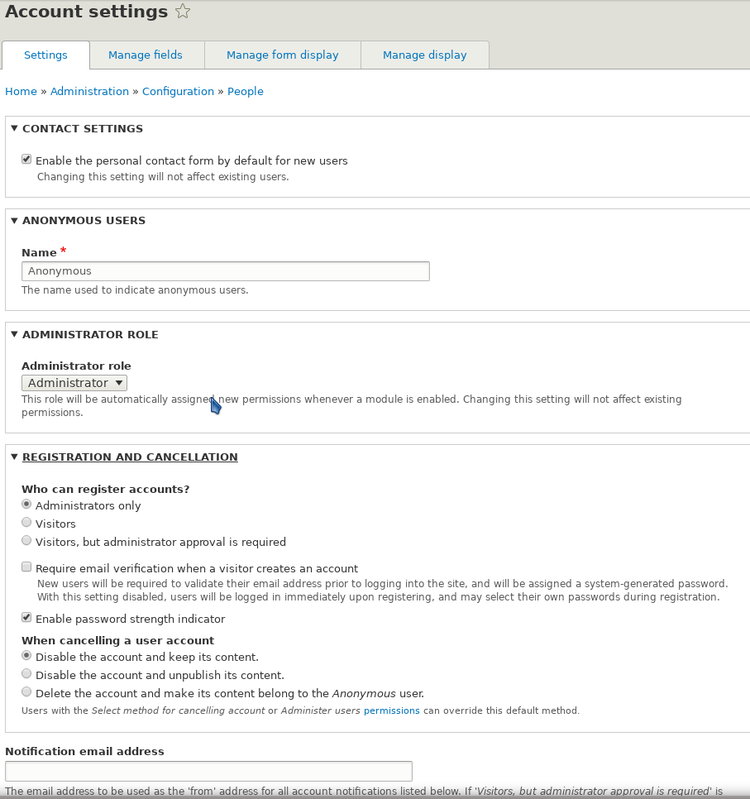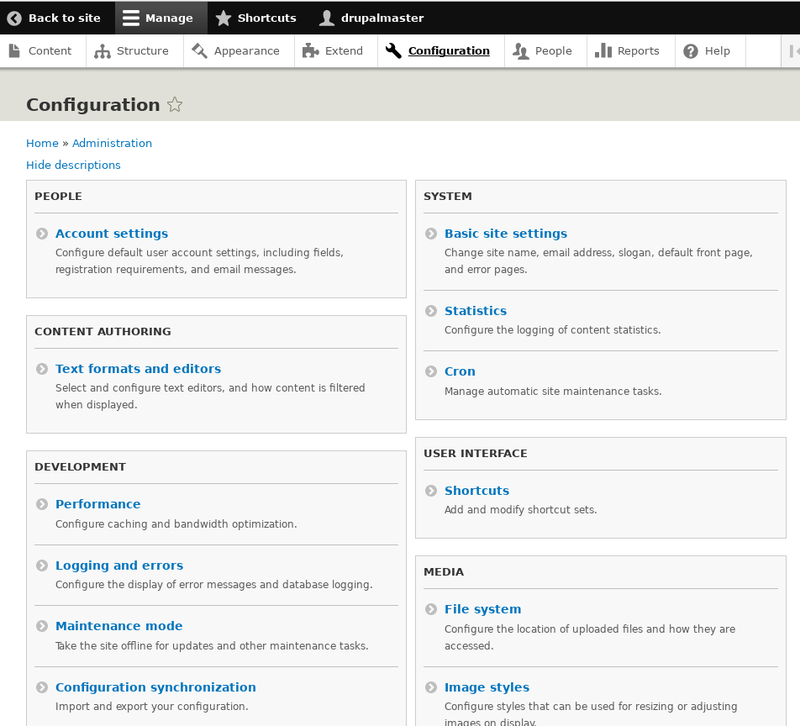
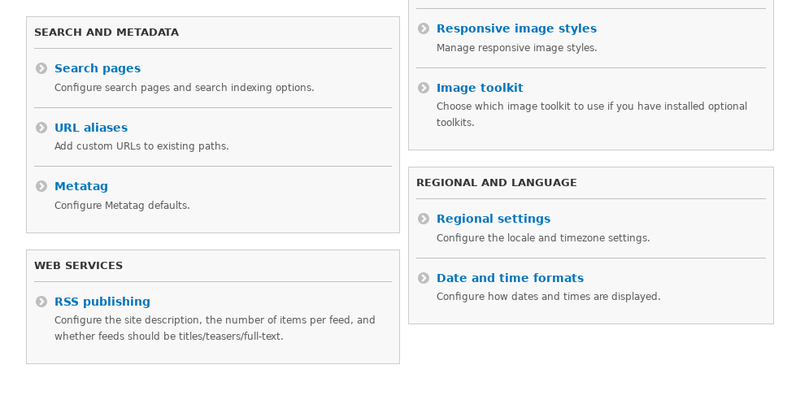
A Drupal site is very configurable, this means that the site
manager has a very fine control on most aspect of the site,
all exposed through the administration web interface.
This is a great feature: you can define a lot of things without modifying
the theme or writing PHP code, but the downside is that the
full configuration of a Drupal site needs a lot of time.
The configuration menu is shown in the image below; there are
a lot of sections and a navigation bar at the top
for the most used options.


If you click on "Manage" at top, or on the "Administration" item on the first row, you are led to a different page, used to administer the site, which show also all the configuration options. They can be grouped by task, or shown as a list, by using the "Tasks or the "Index" tab, which is partially shown below, in the second image.
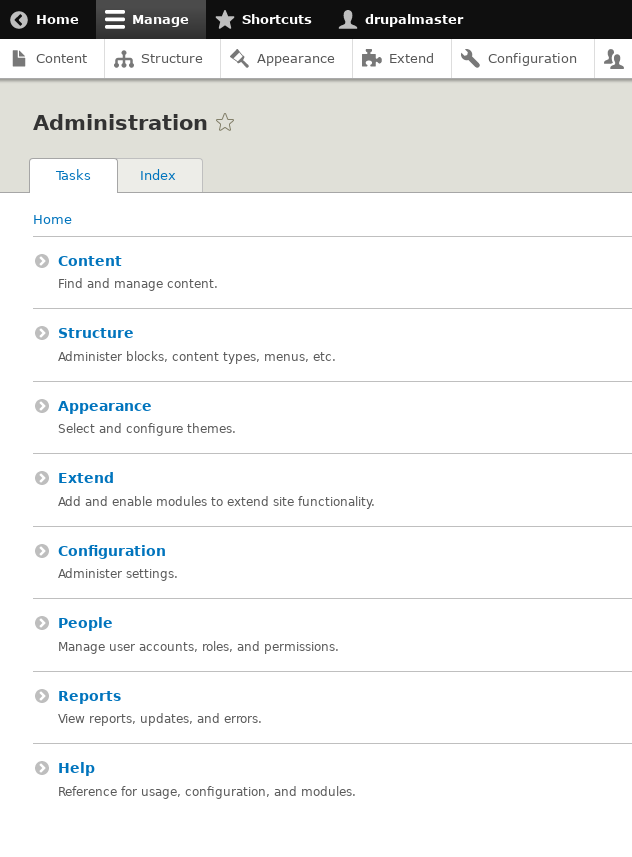
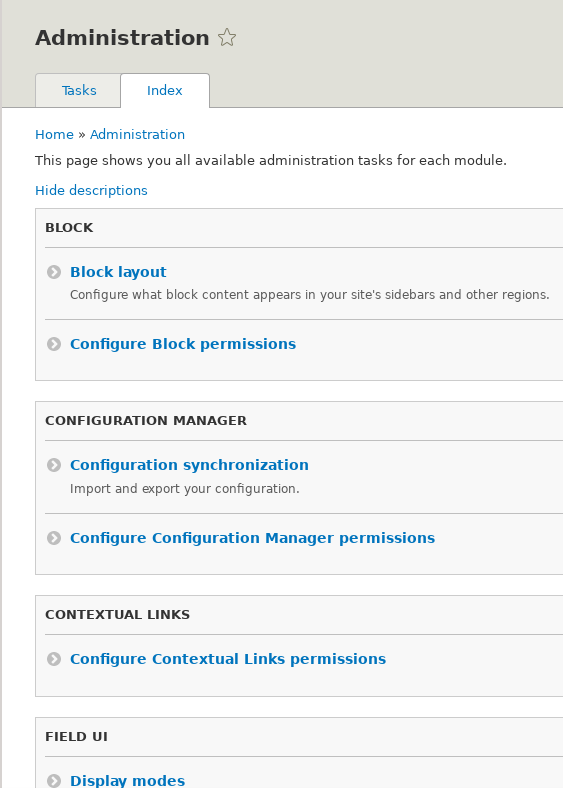
We will now define our users, by clicking on the "People" button of the navigation bar. We want three roles for our users:
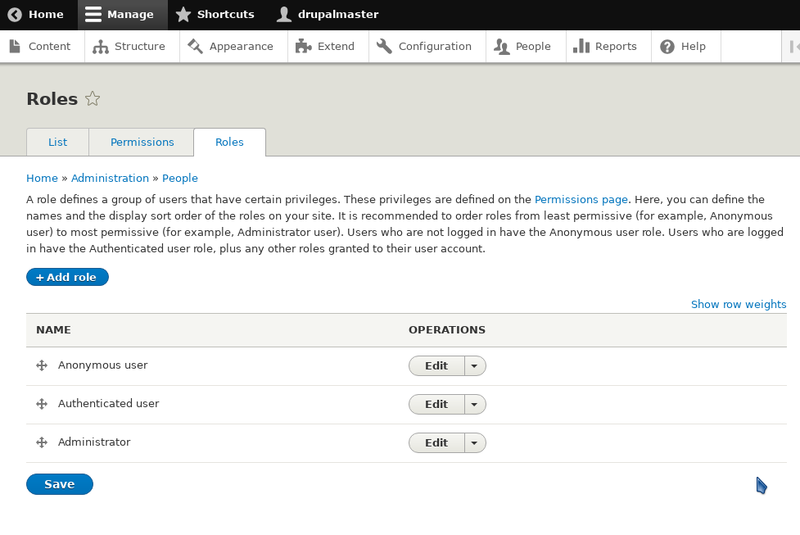
The button "Add role" adds a new role name, then we choose the operation: "Edit permission" to define what the new role can do, and we are led to a page with a very long list: the Drupal authorization scheme is very detailed. It is easier to review the permission for all the roles at once from the "permission tab" of the "People" page.
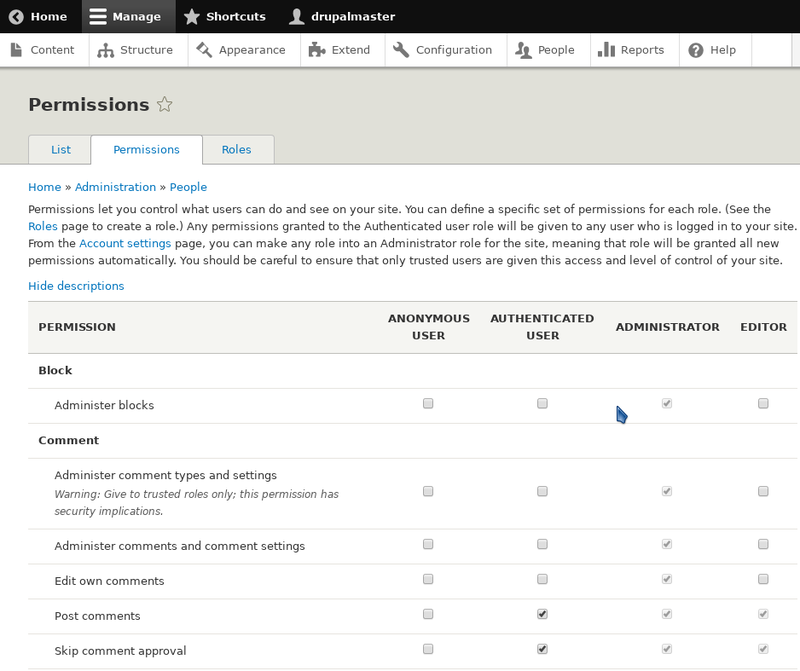
Default settings are mostly good for our site;
we give usage of "Full HTML format" to all;
in the "Node" section we set the main permissions for
our roles: the editor can manage all contents and revision,
the "authenticated user" can insert and modify (but not delete)
its own contents; the "anonymous user" can only read published contents.
There are separate settings for the two available type of contents:
"basic page" and "article"; we set the same permissions for both.
We give access to "URL alias" and "quick edit"
to the editor and the authenticated user. Everyone can use the search feature.
The editor and the authenticated user can use the "administration" pages,
toolbar, and view the administration theme.
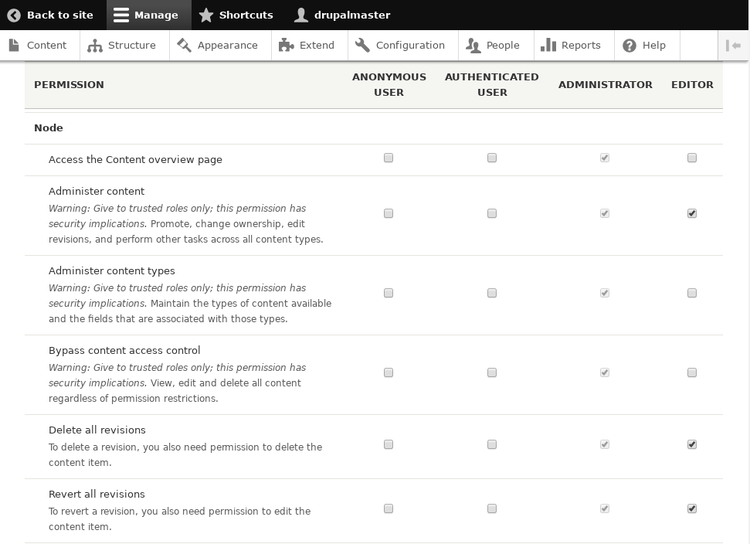
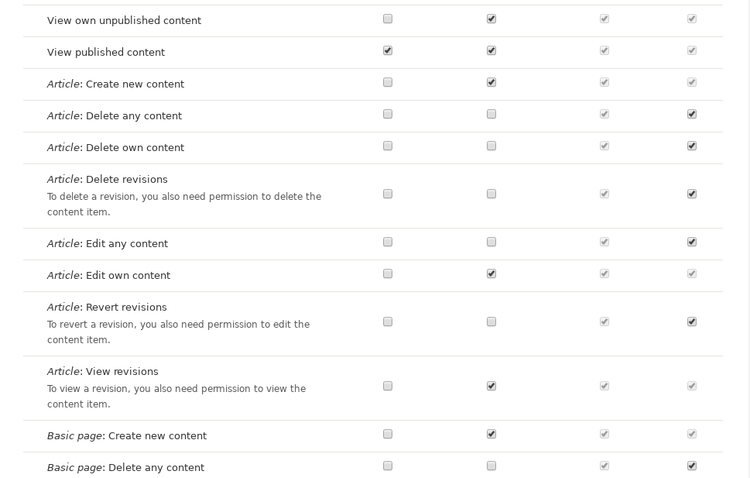
For this action there is a button in the "people" page. We add an "editor" and an "authenticated user", each must have a valid mail address, an username, a password and one or more role assigned.
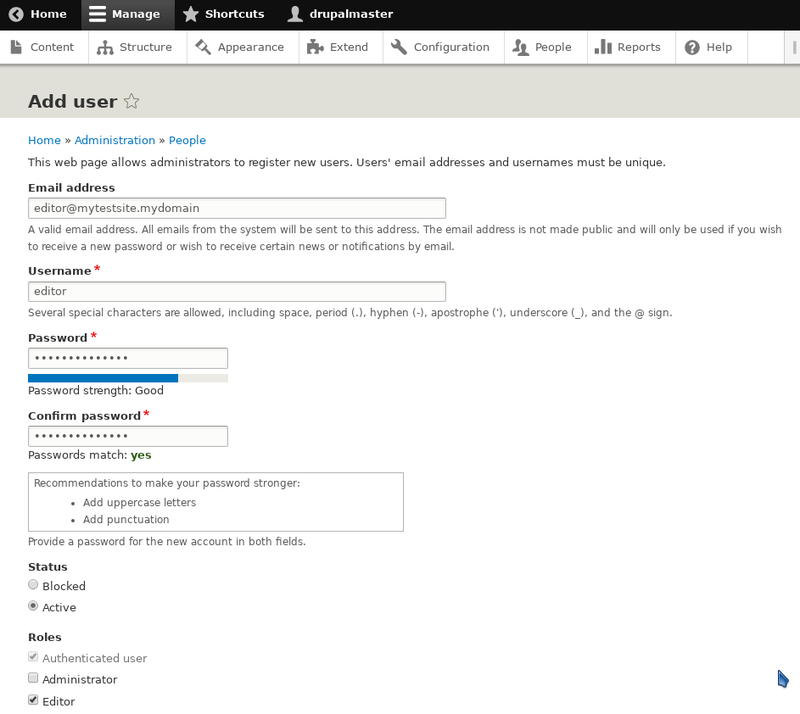
The remaining setting for users can be defined in the "Account settings"
section of the configuration page. Here we give the name for the anonymous user,
assign authorizations defined by new modules
to the "administration" role, and give only to the
administrator the right to register users.
From this page we can also define how the user's profile pages are
organized and shown (the "Manage field" and "Manage display" tabs).
